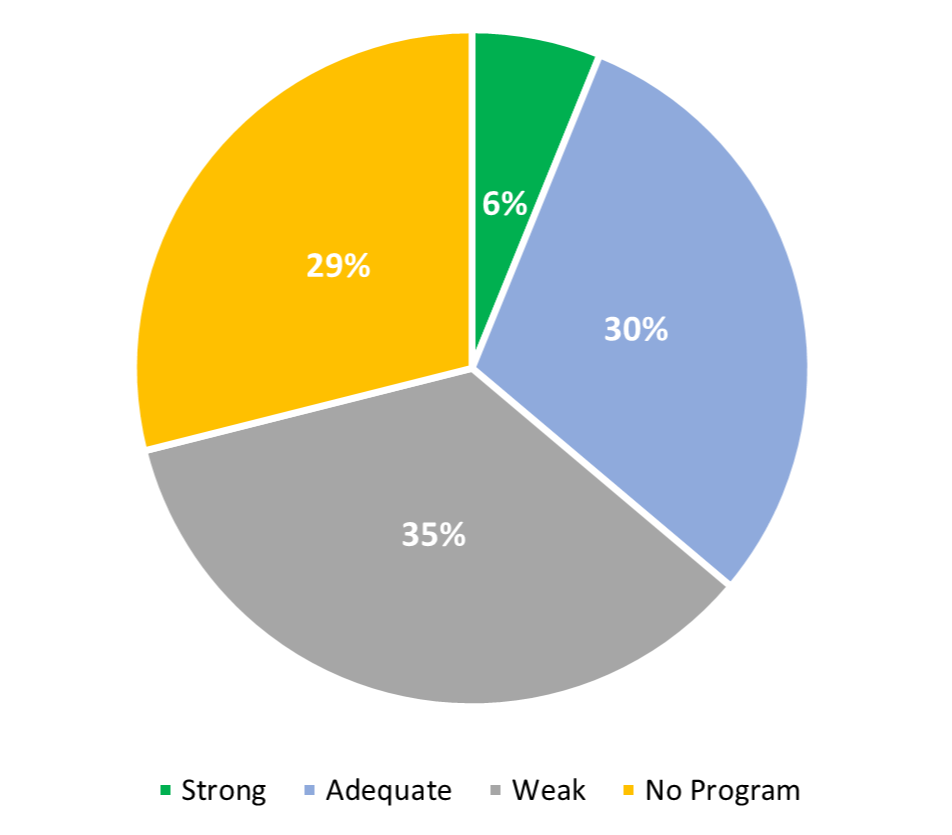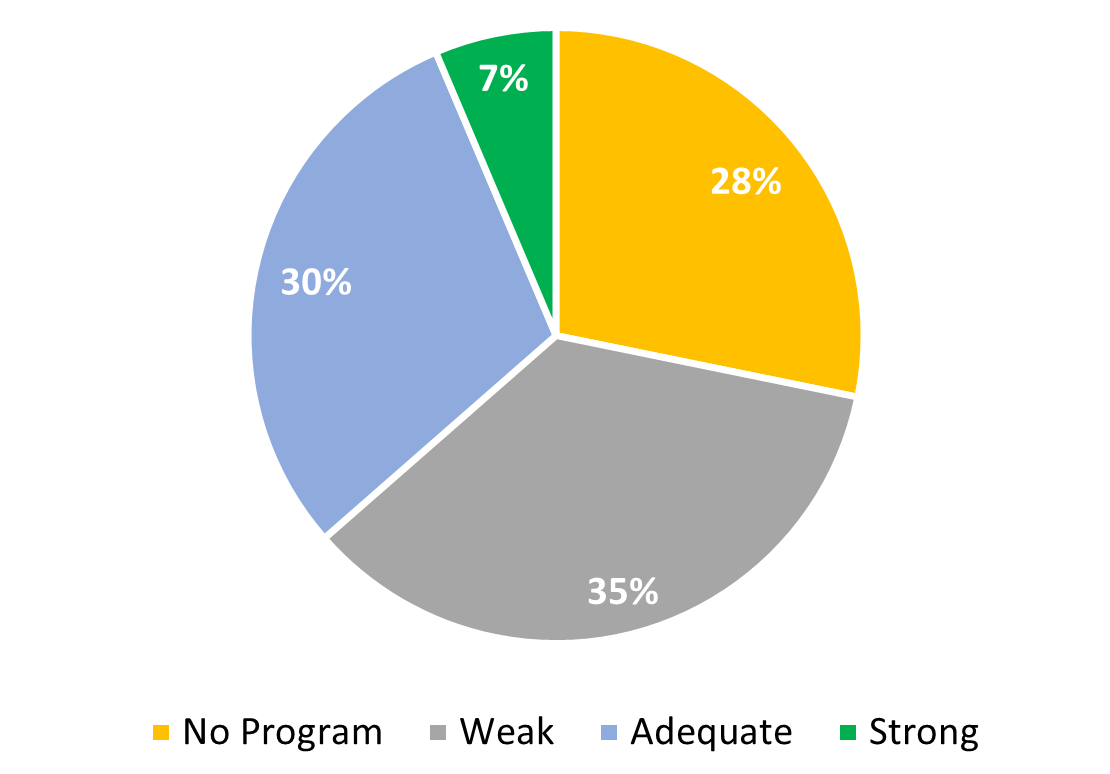On June 7, 2023, as I opened the front door of my southern Ontario home, I was greeted by the smell of a backyard campfire I didn't have. The sky was hazy and a strange color of orange — the result of smoke from more than 200 wildfires burning in Central Canada. I turned to my asthmatic husband, asking him to stay in the house with the air conditioning on and with the windows shut. As of this publication date, Canada is still on fire and North Americans are experiencing the physical impacts of climate change, firsthand.
Heat, malnutrition, and harm from wildfire are some of the adverse impacts on health and well-being from human-caused climate change that will continue to intensify, according to the Intergovernmental Panel on Climate Change’s 2023 Synthesis Report.1 Companies around the world are hyper-focused on managing and eliminating the greenhouse gas (GHG) emissions attributed to the Earth’s rising temperature. However, with the physical risks of climate change manifesting as out of control wildfires and deteriorating air quality, non-GHG air emissions are on the minds — and in the lungs — of many.
Wildfire Smoke as Air Pollution
Air pollution poses an immense threat to global public health, accounting for approximately seven million premature deaths every year.2 Air pollution and climate change are closely linked as all major pollutants have an impact on the climate and most share common sources with greenhouse gases. The World Health Organization has issued strict recommendations on safe air pollution levels to help curb the millions of premature deaths and the loss of millions of healthy years of life caused by air pollution.3
Air emissions must be monitored, controlled, and minimized and are subject to strong laws and regulations in North America. 4 5 These regulations require companies to monitor emissions of pollutants such as sulfur oxide (SOx), nitrogen oxides (NOx), volatile organic compounds (VOCs), and particulate matter (PM). Particulate matter (also called particle pollution) is the term for a mixture of solid particles and liquid droplets found in the air. Some particles, such as dust, dirt, soot, or smoke, are large or dark enough to be seen with the naked eye. Others are so small they can only be detected using an electron microscope.6
Wildfire smoke contains the tiniest and most dangerous particulate matter, PM2.5.7 When inhaled, PM2.5 can travel deep into lung tissues and enter the bloodstream, and it has been linked to several serious health problems and illnesses. PM2.5 comes from other sources as well, most notably the combustion of fossil fuels.8
Why Particulates Matter
A haze of particulate matter has engulfed extensive areas of Canada and the United States as a result of the Canadian wildfires. Air quality warnings have occurred in many Canadian cities and towns, along with places outside of Canada, such as New York City and Washington, D.C.9
The federal government of Canada forecasts a grim wildfire season this summer, predicting higher than normal fire activity across Canada through to August.10 According to scientists, Canada’s unprecedented fire season is linked to climate change and will be the new normal.11
North American city centers with already high air quality indexes12 are suffering from the added emissions produced by the Canadian wildfires. As a result of the wildfires, New York City remained the city with the worst air quality in the world for days. In addition, at least 20 U.S. states issued air quality alerts.13 Knowing that emissions associated with wildfires will only continue to increase and negatively impact the health of people living within and beyond country borders, companies should be focusing on the reduction of non-GHG air emissions with the same rigor as their carbon emission reduction initiatives.
Business has a key role to play in reducing air pollution, as many of their activities cause emissions. Actions that companies can take to reduce air pollution include adding air quality to their corporate social responsibility programs and reporting, quantifying air pollution down the supply chain, collecting the data required to develop non-GHG emissions inventories related to the company’s own activities, establishing programs that reduce air pollution, and promoting awareness and transparency around the levels of emissions caused by the company’s operations.14
Non-GHG Air Emissions Need to Matter More
According to Morningstar Sustainalytics’ research methodology, a strong non-GHG air emissions program means that a company is identifying and monitoring non-GHG air emissions, has committed to reducing said emissions, and has developed initiatives, targets, and deadlines to reduce them. If we examine the management performance of companies included in Sustainalytics’ ESG Risk Ratings universe globally, the data shows that a mere 6% of companies are rated as having a strong non-GHG air emissions program whereas a staggering 64% of companies have weak or non-existent programs (Figure 1).
Figure 1. Companies’ Non-GHG Air Emissions Program Strength in Morningstar Sustainalytics Global ESG Risk Ratings Universe

Source: Morningstar Sustainalytics. Data as of June 8, 2023 based on subset of companies from the ESG Risk Ratings Universe with data available for indicator E.1.3.3 (n=3,653). For informational purposes only.
Furthermore, companies headquartered in Canada and the U.S. are generally underperforming in comparison to other regions (Figure 2).
Figure 2. Companies’ Non-GHG Air Emissions Program Strength by Region in Morningstar Sustainalytics Global ESG Risk Ratings Universe

Source: Morningstar Sustainalytics. Data as of June 8, 2023 based on subset of companies from the ESG Risk Ratings Universe with data available for indicator E.1.3.3 (n=3,653). For informational purposes only.
Companies included in Sustainalytics Engagement 360 Solution universe have similar management gaps (Figure 3). These companies have been identified as having high levels of unmanaged material ESG risk and have been targeted for engagement to promote and protect long-term shareholder value and generate positive and meaningful environmental, social and governance change. Overall, the data demonstrates that, of the companies reviewed, more than half, regardless of geographic location, sector, or engagement activity level, are not prioritizing the management of harmful non-GHG air emissions.
Figure 3. Companies’ Non-GHG Emissions Program Performance in Morningstar Sustainalytics Engagement 360 Universe

Source: Morningstar Sustainalytics. Data as of June 9, 2023. Morningstar Sustainalytics Engagement 360 Universe. For informational purposes only.
Don’t Let the Dust Settle: Pushing for Corporate Action on Non-GHG Emissions
In addressing climate change issues, companies need to look beyond the impacts of their carbon emissions and equally seek to reduce and eliminate non-GHG air emissions contributing to the current air quality crisis. Investors can continue to engage with companies to push for transparent disclosure and management of non-GHG air emissions, while acknowledging these emissions as a material ESG issue that should influence the company’s overall climate strategy.
Non-GHG emissions will continue to rise as the physical impacts of climate change continue to materialize, and there’s little room left to breathe for companies not doing their part to eliminate hazardous non-GHG air emissions from their operations.
References
- Intergovernmental Panel on Climate Change. 2023. Climate Change 2023 Synthesis Report: Summary for Policymakers. https://www.ipcc.ch/report/ar6/syr/downloads/report/IPCC_AR6_SYR_SPM.pdf.
- UN Environment Programme. 2022. “Pollution Action Note – Data you need to know.” August 30,2022. https://www.unep.org/interactive/air-pollution-note/.
- World Health Organization. 2021. “New WHO Global Air Quality Guidelines Aim to Save Millions of Lives From Air Pollution.” September 22, 2021. https://www.who.int/news/item/22-09-2021-new-who-global-air-quality-guidelines-aim-to-save-millions-of-lives-from-air-pollution.
- United States Environmental Protection Agency. Clean Air Act Compliance Monitoring. n.d. https://www.epa.gov/compliance/clean-air-act-caa-compliance-monitoring.
- Ministry of the Environment. 2007. Regulatory Framework for Air Emissions, Canada. https://www.ec.gc.ca/doc/media/m_124/report_eng.pdf.
- United States Environmental Protection Agency. Particulate Matter (PM) Basics. n.d. https://wwwhttps://www.epa.gov/pm-pollution/particulate-matter-pm-basics.epa.gov/pm-pollution/particulate-matter-pm-basics#What%20Is%20Pm,%20and%20How%20Does%20It%20Get%20Into%20The%20Air?Size%20Comparisons%20For%20PM%20Particles.
- PM2.5 is atmospheric particulate matter that are 2.5 micrometers or less in diameter. California Office of Environmental Health Hazard Assessment: https://oehha.ca.gov/calenviroscreen/indicator/air-quality-pm25.
- Van Dam, D., Ramirez, R. 2023. “New York City’s air pollution among the world’s worst as Canada wildfire smoke shrouds Northeast.” June 7, 2023. CNN. https://www.cnn.com/2023/06/06/us/new-york-air-pollution-canada-wildfires-climate/index.html.
- Shingler, B. 2023. “How 'severe and unusual' smoke from Canadian wildfires is spreading and what it means for your health.” June 7, 2023, CBC News. https://www.cbc.ca/news/climate/canada-wildfire-smoke-spreading-1.6868662.
- “Federal data forecasts grim wildfire season this summer.” June 5, 2023. CBC News. https://www.cbc.ca/news/politics/wildfires-outlook-forecast-1.6865791.
- Trinh, J., and Ziafati, N. 2023. “Canada's 'unprecedented' fire season linked to climate change, will be the new normal: scientists.” June 2, 2023. CTV News. https://www.ctvnews.ca/canada/canada-s-unprecedented-fire-season-linked-to-climate-change-will-be-the-new-normal-scientists-1.6425110.
- IQAir. Air Quality and Pollution City Ranking. https://www.iqair.com/world-air-quality-ranking.
- Jacobo, J., Golembo, M. and Peck, D. 2023. “Wildfire Smoke Map: Forecast Shows Which US Cities, States are being Impacted by Canadian Wildfires.” June 8, 2023. ABC News. https://abcnews.go.com/US/wildfire-smoke-map-us-cities-states-impacted-canadian/story?id=99865946.
- Weller, R., and Michalopoulou, E. 2020. “Here are 5 ways companies can clean up the air.” September 22, 2020. GreenBiz. https://www.greenbiz.com/article/here-are-5-ways-companies-can-clean-air.





